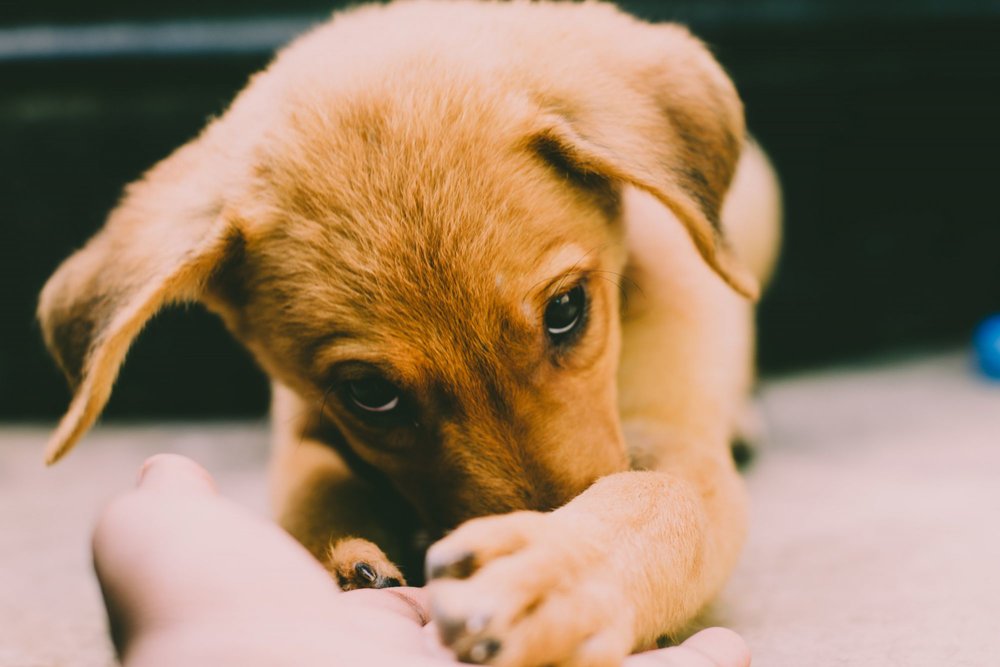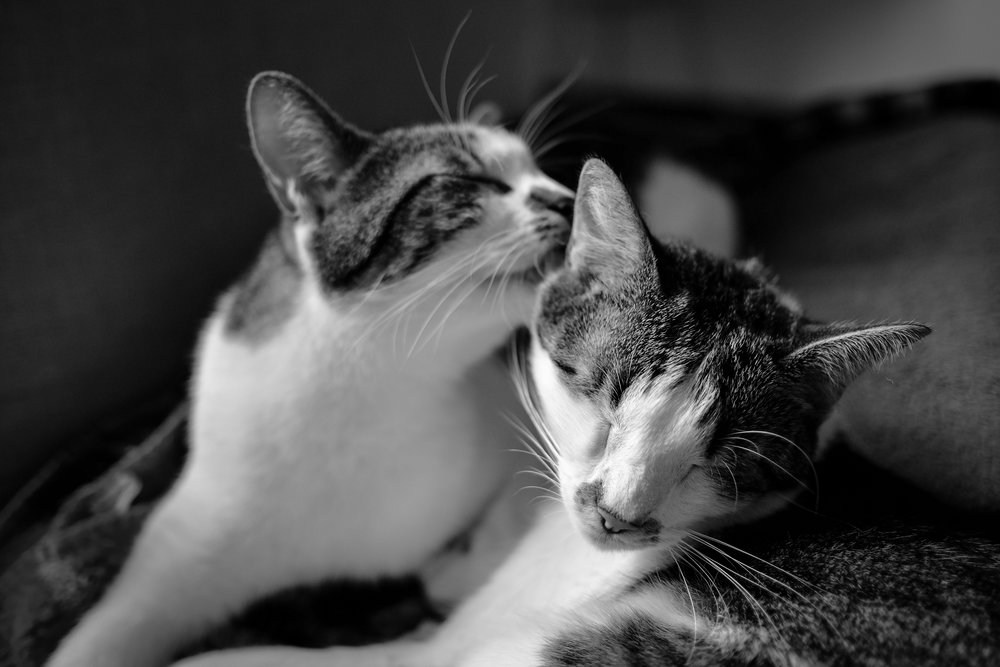
Spaying/Neutering 101: What You Need to Know
According to PETA, more than 6 million lost, abandoned, or unwanted dogs and cats enter animal shelters across the United States every year. And due to overpopulation/space limitations at shelters for pets that do not get adopted, 3-4 million of those animals are euthanized annually. As lovers of all fur babies, we know these numbers are heartbreaking – but the great news is that pet owners everywhere can actively help reduce this problem!
Spaying or neutering your pet (or working with a trusted veterinary professional to surgically remove their reproductive organs) is one of the most responsible things a pet owner can to do help reduce the pet overpopulation problem and has many potential society and health benefits.
We worked with Lori Behrman of the Toby Project – a New York City based non-profit that operates to provide free and low-cost spay and neuter services to those communities that supply or surrender the most animals to municipal shelters – to answer some of the outstanding questions you may have about spaying or neutering your pet.
What is the difference between “spaying” and “neutering” my pet?
Let’s start with the basics – According to the American Veterinary Medical Association, spaying your female pet will remove her ovaries, fallopian tubes, and uterus. With those reproductive organs removed, she will no longer experience a heat cycle and will be unable to produce offspring. This procedure may also be known as an Ovariohysterectomy.
If your male pet has been neutered, his testicles and any associated structures have been removed. Neutered males will also be unable to produce offspring and may experience reduced, if not eliminated, breeding behaviors (e.g. humping). This procedure may also be known as an Orchiectomy.
What are some of the benefits of having my pet spayed or neutered?
In addition to significantly contributing in reducing the pet overpopulation problem, having your pet spayed or neutered can help significantly expand the length and quality of your fur baby’s life. According to American Humane, the additional health and behavioral effects of spaying or neutering your pet may include:
Health Benefits
Spaying female cats and dogs before their first heat cycle can reduce the risk of developing breast cancer and almost eliminate the odds they will have uterine infections/cancer. Neutering males can decrease their chance of testicular cancer or enlargement of the prostate gland, and greatly reduces the risk of developing perianal tumors.
Behavioral Benefits
Spaying your pet can reduce the constant crying, nervous pacing, or any messiness associated with females in a heat cycle. Neutering of male dogs and cats can prevent certain undesirable sexual behaviors, such as urine marking, aggression and the urge to roam in search of a mating partner
Photo Credit: Ghost Presenter via Pexels
At what age is it safe to have my pet spayed or neutered?
According to Behrman, the Toby Project will only accept pets between 4 months and 5 years of age on their mobile clinics, as older pets can be more likely to have post-operation complications. The ASPCA notes that it is generally safe to spay or neuter healthy kittens and puppies who are as young as 8 weeks old at more traditional stationary veterinary clinics.
How much will spaying or neutering my pet cost?
Spaying/Neutering costs can vary depending on a variety of factors, including your location, the size/type of your pet, and the type of facility where you choose to get the procedure. One benefit of having your pet spayed or neutered through your regular veterinary professional is the convenience/flexibility with your schedule, but those services can come at a price. According to Behrman, private practice spay/neuter procedures can run on average from $200-$400.
“Unfortunately, the cost [of a spay/neuter surgery] can be prohibitive for a lot of people who love their pet and want to do the right thing,” Behrman says. “These pets are members of their families, but they are struggling [financially] and it’s hard for them to afford it.”
Knowing that procedure costs can be one of the biggest challenges to ensuring that every pet is spayed or neutered, organizations like the Toby Project in NYC, the ASPCA, and the Humane Society attempt to offer local and national services that are more affordable.
Be sure to contact your municipal shelters, local chapter of the Humane Society as well as the ASPCA’s comprehensive database to find out more about affordable spay/neuter programs in your community.
What should I do to prepare my pet before a surgery?
Behrman instructs potential clients who are interested in taking advantage of the Toby Project’s services to do the following before bringing their pet in for a spay or neuter operation:
- Female dogs will only be permitted for a spay operation if it has been 30 or more days since her last heat cycle.
- Female dogs who are currently in a heat cycle will not be spayed through the Toby Project’s services; Veterinarians similarly prefer to wait until a female dog has finished her heat cycle before starting a spay surgery.
- Ensure that pets over 4 months of age do not eat after midnight the night before a spay/neuter procedure, but always make sure that your pet is as well hydrated as possible.
- For cats, pet owners must bring a carrier to escort their furry loved one home after being discharged from the clinic.

How long does the surgery take?
Though operation times may vary depending on the surgical clinic or veterinary practice, Behrman says most surgeries should not take more than half a day/a full day to complete.
For the Toby Project’s mobile clinic procedures, pet intake of 8-17 pets (depending on the animal size and available space) usually ends around 9am. With a maximum of two surgeons working, the Toby Project can typically finish all operations by 1-2 pm. No pet will be discharged until they have fully awoken from their anesthesia-induced sleep.
What can I do to help keep my pet comfortable post-operation?
Though a typical spay/neuter surgery will not keep pets out of commission for too long, always plan to consult with your veterinary professional regarding your pet’s post-surgical care plan. In addition to the medical direction from your vet, Behrman and the Toby Project recommend the following tips to help get your fur
baby back on their paws soon:
Stitches & Collar
The stitches used to close the surgical incision will be buried under your pet’s and will dissolve on their own as the wound heals. As your pet’s wound heals, it is critically important they wear any provided Elizabethan (resembling a large lamp shade and humorously known as the “cone of shame”) collar at all times post-surgery. You can remove the collar after 10 days have passed and if the wound has no swelling or discharge.
Food & Water
Following a bout anesthesia, it is recommended that you feed your pet a normal meal spread out over 4 hours (e.g. by feeding ¼ of the amount every hour.) But it is not necessarily a cause for alarm if your pet’s appetite poor that evening – attempt to resume a normal feeding schedule in morning. Plan to consult your veterinarian should your pet’s appetite not return over the following few days.
Grooming
Do not give your pet a bath for 10 days as water that get into the incision can cause infection.
Exercise
Keep your pet’s activity level to short leash walks for no more than 15 minutes for the first 10 days post-operation so the stitches do not reopen.
Other Pets
During the first 10 days following the operation, plan to keep your pet’s interactions with other animals to a minimum – though wearing the cone can help prevent your pet from licking their wounds, exposure to other pets may result in playful licking that can inadvertently cause inflection near the incision sight.
 Photo Credit: Allymime via Pexels
Photo Credit: Allymime via Pexels
Other Things to Watch
Urination/Defecation
For male cats who have been neutered, we recommend using shredded newspaper or dust-free litter for 3 days post-surgery as cat litter may get kicked up into the incision and cause infection. It is normal that your pet may not urinate, have a bowel movement, or develop diarrhea post-surgery. If your pet still does not urinate or pass a bowel movement after one day, plan to contact your pet’s veterinary or emergency medical team for additional information.
Nausea
Depending on your pet’s age and health, it may take up to a full day for the anesthesia to leave the body’s system depending on their age and health. Immediately contact your pet’s veterinary or emergency medical team if symptoms persist longer than one day post-surgery.
Incision Site
Plan to check the incision site each day – some redness and even bruising associated with the wound is normal, but you should monitor for pus or blood discharge from the incision site. Contact your pet’s veterinary or emergency medical team as soon as possible if you notice discoloration and/or oozing from a reopened incision site.
Hiding
It may be normal for your pet to seclude him/her self after coming home from surgery, therefore we recommended keeping your pet in a smaller room or crate for the first few nights so that you can frequently check on them, easily administer any pain medication, and check the incision daily.
For additional information on the benefits of spaying and neutering your pet, be sure to check out the following resources:


Anonymous
March 20, 2018 at 11:52 PMThe spay/neuter surgery is not without risks! I lost my fur-baby Catrina on March 14, 2017 after she experienced a severe reaction to the anesthesia she was given. Always discuss with the vet what type of anesthesia will be used and make sure that they weigh your fur-baby and have the weight correct! I believe my fur-baby was given the wrong amount of anesthesia, being she was so small for a full grown cat, and her weight may have been written down wrong, –she may have weighed 4.6 pounds, but may have been given a dose for a cat that weighed 6.4 pounds!! I will NEVER leave an animal at a vet that needs any type of surgery again, until after the surgery is completed.